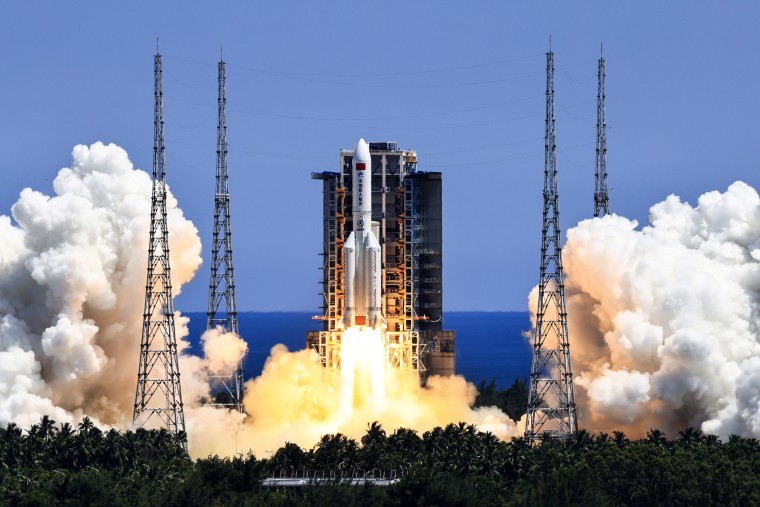China has been criticized for disregarding safety standards after the remnants of a rocket plunged through Earth’s atmosphere and into the sea off the Philippines Saturday.
Beijing did not share the “specific trajectory” of the Long March 5B rocket’s fall, NASA administrator Bill Nelson said on Twitter.
“All spacefaring nations should follow established best practices, and do their part to share this type of information in advance to allow, reliable predictions of potential debris impact risk, especially for heavy-lift vehicles, like the Long March 5B, which carry a significant risk of loss of life and property,” Nelson wrote.
“Doing so is critical to the responsible use of space and to ensure the safety of people here on Earth,” he added.
The Long March 5B, China’s most powerful rocket, launched on July 24. It arrived at the Chinese space station Tianhe the following day carrying a new laboratory module for scientific experiments.

Debris from the rocket, which stood 10 stories high and weighed almost 23 tons, was traveling up to 17,000 miles per hour before it crashed into the Philippine Sea at 12:55 a.m local time (12:55 p.m. ET).
The China Manned Space Agency reported that most of the rocket burned up after entering the atmosphere. The agency said earlier that the booster would be allowed to fall unguided.
The announcement gave no details of whether remaining debris fell on land or sea but said the “landing area” was at 119 degrees east longitude and 9.1 degrees north latitude. That is in waters south-east of the Philippine city of Puerto Princesa, on the island of Palawan.
There was no immediate word from Philippine authorities about whether anyone on the ground was affected.
“You’re dropping the equivalent of a couple of cars worth of material over a very large area,” Ted Muelhaupt, an aerospace consultant, told NBC News.
“It’s more than 10 times the accepted standards for risks that the U.S. uses,” said Muelhaupt, a consultant for the Aerospace Corporation, a U.S. nonprofit corporation that operates a federally funded research and development center in El Segundo, California.
“It’s something that people can choose not to do,” he said, adding that the industry standard is to deliberately bring large objects down to safe locations away from people.
“People are watching, people are worried people were getting calls, “is this going to hit my house? That kind of reaction to the uncertainty of an event like this is its own cost,” he said.
Before the landing, China’s Foreign Ministry said the risk to the public was very low and that most of the rocket would burn up on re-entry.
Overnight videos appeared to show pieces of the rocket streaking through sky over Malaysia as the debris re-entered Earth’s atmosphere.
This is not the first time China has let a rocket free fall back toward Earth. Last May, another uncontrolled Chinese rocket booster dropped from the sky and landed in the Indian Ocean.
China plans to send another lab to its space station in October.